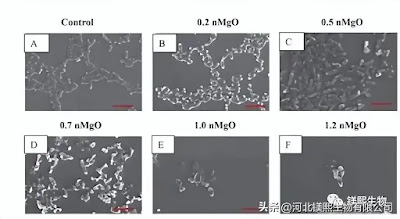Hebei Messi Biology Co., Ltd. stated that electronic grade magnesium oxide can be used as various additives and electronic parts, phosphor raw materials, various target materials, raw materials for superconducting thin film substrates, tunnel magnetoresistance elements (TMR elements) It is used as the raw material of the tunnel barrier layer, the protective film raw material for the color plasma display panel (PDP), and is also used as the raw material of the crystalline magnesium oxide layer for the PDP. It has attracted attention as an inorganic material with extremely wide applications.
In recent years, magnesium oxide powders with a large crystallite diameter, extremely small crystal skew, and good crystallinity that can fully exhibit various properties of magnesium oxide such as insulating properties, fluorescent properties, and transparency have been demanded in various applications.
As methods for producing magnesium oxide powder, there are mainly known gas phase method for producing by oxidation of metal magnesium, thermal decomposition method for producing by calcining precursors such as magnesium hydroxide or magnesium carbonate at a temperature higher than the thermal decomposition temperature, and pulverization. Method of blocks obtained by electrofusion. However, in the conventional method, although a magnesium oxide powder having a single crystal size can be obtained, it cannot be said that the size is sufficient, and also a magnesium oxide powder having good crystallinity cannot be produced.
As the magnesia powder having good crystallinity, a magnesia powder having a peak half-width of the (200) plane in Cu-Ka ray powder X-ray diffraction within a range of 0.40 to 0.60 degrees is used. Magnesium oxide powder with an X-ray diffraction peak half-width of 0.25 to 0.52 deg at Bragg angle (2e ± 0.2 deg) = 42.9 deg ((200) plane) of Cu-Ka ray powder X-ray diffraction method was used. However, the crystallinity of these magnesium oxide powders does not reach a sufficient level.
After repeated studies to solve the above-mentioned problems, it was found that when the magnesia powder is produced by calcining the magnesia precursor by the thermal decomposition method, in the presence of a specific amount of halide ions, and in the presence of a specific amount of halide ions, and under a closed state different from the usual calcination conditions. By performing this calcination in the system, magnesium oxide powder with a large crystallite diameter and good crystallinity, which cannot be obtained by conventional production methods, can be produced.








0 Comments